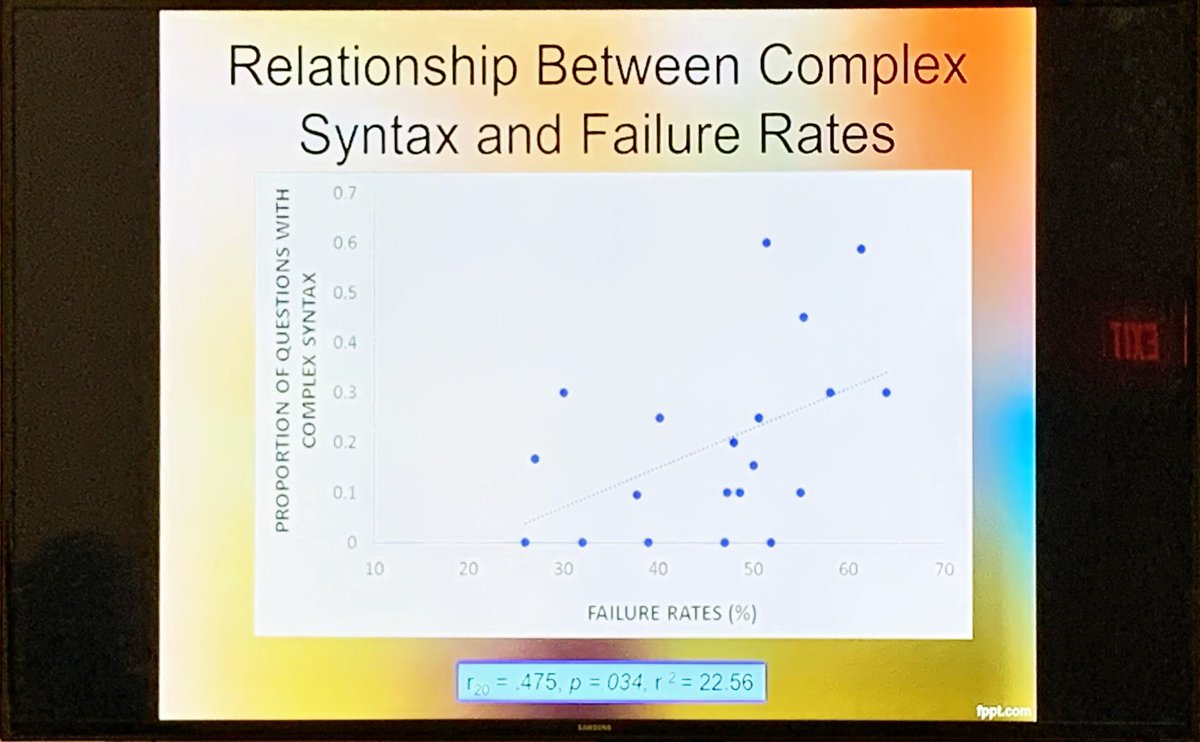Now at #ASHA19 presentation from Tammie Spaulding and her undergrad student Kaitlyn Flint on the difficulties adolescents have with accessing the language to pass a driver’s licence test.
As in Australia, new drivers need to pass a written test before gaining a Learner’s Permit. Failure rates range from 10-70% across a range of US States.
Flint examined reading ability of adolescents who take this test, particularly whether questions and answers in the multiple choice format were understood.
This is important, when we factor in the the average reading grade for an adult is 8th grade or higher.
This is important, when we factor in the the average reading grade for an adult is 8th grade or higher.
Flint had to assume the practice test questions were of equivalent complexity to the real test items (as the DMV weren’t too happy sharing the REAL questions!)
She used the Flesch-Kincaid Grade Level Readability Formula (which is about ease of reading, rather than comprehension)
She used the Flesch-Kincaid Grade Level Readability Formula (which is about ease of reading, rather than comprehension)
(FKGL relies on words per sentence and syllables per word, as opposed to commonality of vocal items)
Reading Grade Level of 86.28% of questions were below 8th grade level, so WHY are people still often failing this? (There is a lot of variability thought between the States)
So the second thought was that maybe there was a relationship between Failure Rates in States with more complex FKGR scores.
Turns out - yes, there’s a high relationship! 19.89% of variability in failure rates can be attributed to this relationship.
Turns out - yes, there’s a high relationship! 19.89% of variability in failure rates can be attributed to this relationship.
Flint then looked at Comprehensibility: with particular focus on syntactic complexity. E.g. [When a driver is waiting to make a left turn], [what is the procedure they should take][ [when the light turns green]?
There were also examples of Embedded Clauses and Passive Voice within questions.
22.56% of the failure rates can be explained by rates of complex syntactic complexity within the test. (Picture of the relationship to follow later!)
22.56% of the failure rates can be explained by rates of complex syntactic complexity within the test. (Picture of the relationship to follow later!)
What this implies is that test takers who have learned the information from DMV manuals may be incorrect due to the way in which the questions are asked.
There is scope here for lots more study in this area, looking at profiling test takers and their results.
There is scope here for lots more study in this area, looking at profiling test takers and their results.
Tammie Spaulding also adds that adolescents are VERY keen to access the social freedom of a learners permit, so being able to formulate therapy on syntactic complexity around this sort of test, may improve willingness to perform in therapeutic tasks.

 Read on Twitter
Read on Twitter


